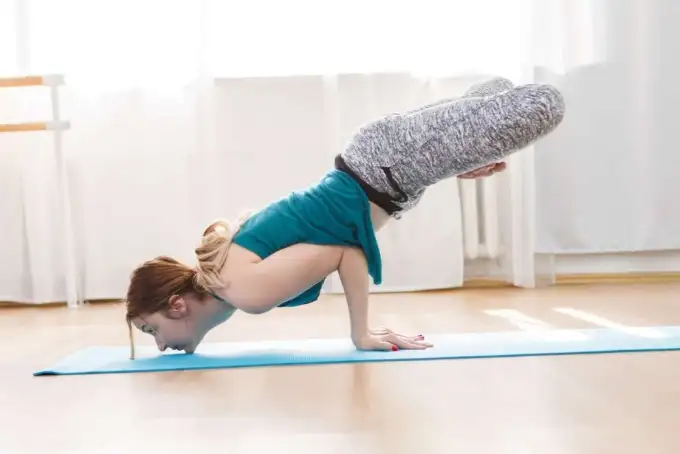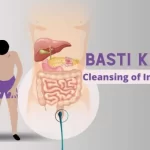Padma Mayurasana is an easier preparatory variation of Mayurasana. In this asana, the folded legs represent Lotus and the lifted body on two arms depicts Mayur or Peacock. Hence, it’s called Lotus in Peacock Pose.
In Padma Mayurasana, balancing calls on the wrist, forearm, shoulder, and core muscle strength. Along with balance, it aids in the practitioners’ muscular development. Additionally, it guarantees improved organ performance.
Padma Mayurasana – Padmasana + Mayurasana
The difference between Padma Mayurasana and other poses is the presence of the two species. The Lotus and the Peacock have a variety of beneficial effects on the practitioner’s physique. The lotus is regarded as a representation of enlightenment, purity, and rebirth that purges the practitioner’s mind of impure thoughts. This ultimately leads to the spiritual path and becomes the catalyst for enlightenment, which dispels all the ignorance and darkness that are the root causes of suffering. As a result, life becomes peaceful and joyful.
As shown in the Book of the Dead Transformation of the Spells, the Lotus flower is said to possess magical qualities that have the power to bring the dead back to life.
The peacock, on the other hand, represents wisdom, safety, and watchfulness. Thus, the Mayurasana not only fosters these skills to heighten awareness during practice but also prepares the body and mind to handle life’s many challenges.
Practice Guide to the Padma Mayurasana
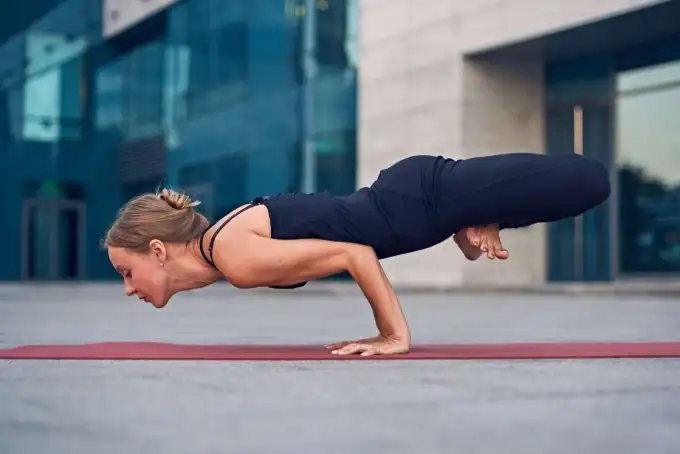
Follow the guide below to begin the Padma Mayurasana
Contraindications
If you have a wrist, shoulder, elbow, or spinal injury, you shouldn’t perform Padma Mayurasana. Additionally, this stance should be avoided by those who are pregnant, have had stomach surgery, have high blood pressure, or have asthma.
Padma Mayurasana Steps
- Begin by coming into the Dandasana where your legs and back remain erect. Breathe normally here.
- Now, lift your right foot and place it on the left thigh, then lift your left foot and place it on the right thigh. This completes the Padmasana.
- Walk your hand forward from padmasana, bend forward, and stand in padmasana. The tips of your fingers are pointed backward.
- Bring your elbows together, bend them, and lean forward to lay them on the navel or in the middle of your abdomen.
- To rest your upper arms on your torso, try to lean a little bit further forward. After that, exhale as you elevate your legs into the padmasana position by contracting your abs and using your hands to push against the floor.
- Maintain this position for as long as you can before lowering your body into Padmasana, leaning back to sit in Padmasana, and lastly entering Dandasana.
Precautions
- Due to the folded legs in Padma Mayurasana, avoid balancing while bending forward in padmasana. Injury to the lower back, spine, or knees is possible in the event of an accident.
- Practitioners should avoid moving their hands too far from the middle. It could fall forward as a result of this. To get a decent balance in the middle, one should maintain a 90-degree angle at their elbows.
- In order to maintain the posture’s energy, practitioners should avoid lowering their heads when in the final stance. To keep the position powerful, keep your neck extended and your head raised.
Beginners Tips
- Before attempting Padma Mayurasana, beginners should aim to learn Padmasana because if their knees tighten, it may be more difficult, making Padma Mayurasana more challenging.
- Raising the padmasana created by folding the legs may be challenging if there is a lack of core strength and flexibility in the lower back and spine. In order to do successfully in Padma Mayurasana, beginners should focus on their particular body parts initially.
- Beginners should place their hands firmly on the ground and keep their elbows close together when raising to support their lower bodies. Due to the body being looser, this will reduce the likelihood of injury.
- Using appropriate props in Padma Mayurasana can help beginners;
Props and Modifications
- For the essential elevation in Padma Mayurasana, practitioners who are unable to lift their bodies appropriately can place blocks under their hands. It will help keep the posture in place.
- In the event that the hands are misplaced, prevent the head. A bolster or blanket placed beneath the practitioner’s head could minimize injuries from falls.
- The assistance of another person or chair support can be used by practitioners who can attain the final posture but are unable to maintain it for a few seconds.
Variations
- Some of the variants for Padma Mayurasana can be practiced to broaden your practice. The following variations are therefore examined by the practitioners one by one:
1. Pungu Mayurasana Padmasana (Wounded Peacock Pose)
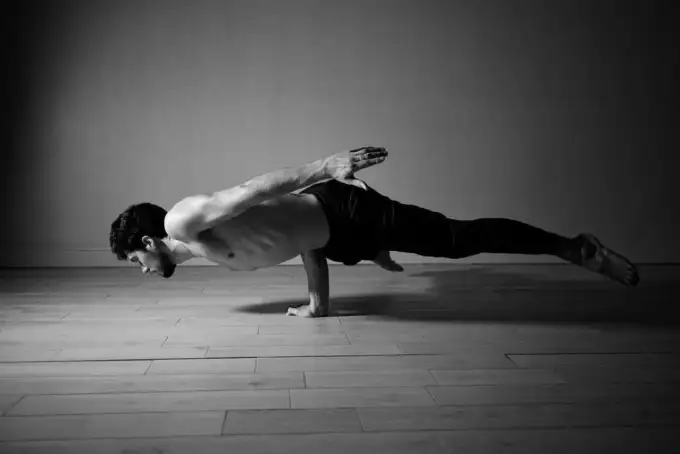
The body is supported in Punga Mayurasana by one hand that is placed next to the navel. Legs straighten and the torso leans forward with one hand held in the air.
Start by assuming the Vajrasana position, then open your knees and place your right hand with your fingers pointing outward between them. Knees back in the starting posture left hand forward on the floor. Put your right elbow under your belly button by bending it. Legs should now be straight and you should be standing on your toes. After that, make an effort to lean forward, gradually move your weight forward, and lift your toes to maintain balance. Maintain this position for a while, then turn around by lowering your left hand, knees, and toes.
2. Uttana Padma Mayurasana
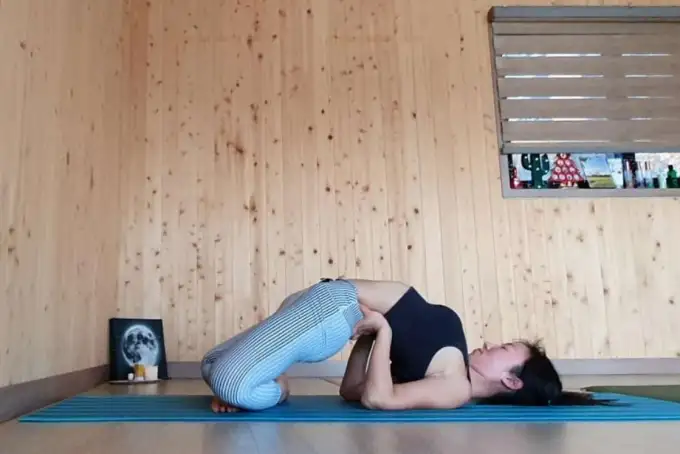
3. Uttana Padma Mayurasana
Uttana Padma Mayurasana is a supine variation of Padma Mayurasana in which the legs are still in the lotus position while the lower back is supported by both hands.
You can strike this position by entering Sarvangasana. Then, with both hands supporting the back by wrapping them around the waist, the legs are bound into the padmasana position. Finally, the knees in padmasana are brought to the floor. This is Uttana Padma Mayurasana’s last pose.
Therapeutic Benefits
The following physical problems can benefit from the therapeutic benefits of Padma Mayurasana:
- In this pose, the pressure against the upper arm faced by the stomach stimulates bowel movements in the smaller and larger intestine. It makes Padma Mayurasana one of the good yoga poses for constipation.
- A skin infection typically begins in an oil gland or hair follicle and progresses to a pus-filled mass. Mayurasana practice enhanced the blood flow to the injured areas, which may result in a quicker recovery and a decrease in inflammation.
Padma Mayurasana Benefits
Padma Mayurasana is beneficial for treating a variety of bodily conditions that affect the digestive, excretory, and reproductive systems. Therefore, it can be used to completely eradicate them.
1. Improves Digestion
The Padma Mayurasana position puts pressure on the abdominal areas, which stimulates the digestive system. This promotes increased digestive output and guarantees optimal digestion. Consequently, it enhances digestion in this way.
2. Helps in Spleen Enlargement
Unhealthy eating puts strain on the liver as it works to break down difficult-to-digest meals. Ongoing liver weakness and infection susceptibility result in an enlarged spleen, anemia, bleeding, and pain behind the ribs. However, the practice of Padma Mayurasana overcomes the condition of regular practice and also lowers the symptoms.
3. Improves Cognitive Functions
Regular practice of Padma Mayurasana helps in stimulating the various parts of the body, the brain’s frontal lobe is of them responsible for Cognitive activities. According to one of the studies [efn_note] Cognitive Behavior Evaluation Based on Physiological Parameters among Young Healthy Subjects with Yoga as Intervention https://www.hindawi.com/journals/cmmm/2015/821061/ [/efn_note], it has been found that regular practice of this asana helps in significant improvement in various cognitive functions, such as performance enhancement, neural activity, attention, and executive function.
4. Detoxifies Blood
The liver plays the most significant role in cleansing the blood. Massaging while practicing the Padma Mayurasana helps the liver in ensuring its optimum state of functioning, which not only filters toxins and unwanted byproducts from the blood but also pulls nutrients from it to deliver to the body. The liver converts waste into relatively harmless substances that it then releases from the body.
5. Reduces Diabetes
The navel region—where the pancreas is situated—or the area in front of the spine is where the elbows that are linked to each other rest or massage. Regular application of Padma Mayurasana causes this gland to secrete the hormone insulin, which aids in controlling blood sugar levels. decreased diabetes as a result.
6. Reduces Cough Problems
A cough is a respiratory tract infection, such as a cold or flu, which causes discomfort in breathing sometimes and affects mind and body balance. As per one of the studies [efn_note] A Survey on Efficacy of B.K.S Iyenger Yoga for Cough https://ejmcm.com/article_5118.html [/efn_note], Practicing one of the variations of Padma Mayurasana has positive effects on cough problems. Hence, helps in the reduction of it.
Conclusion
The Padma Mayurasana is an advanced pose that strengthens various muscles and bones that stabilizes the basic framework of the body. It helps in detoxification and digestion and acts as a therapeutic aid for many ailments.
The practitioners can practice this asana by putting in continuous effort due to the high demand for strength and focus required by this asana.
















